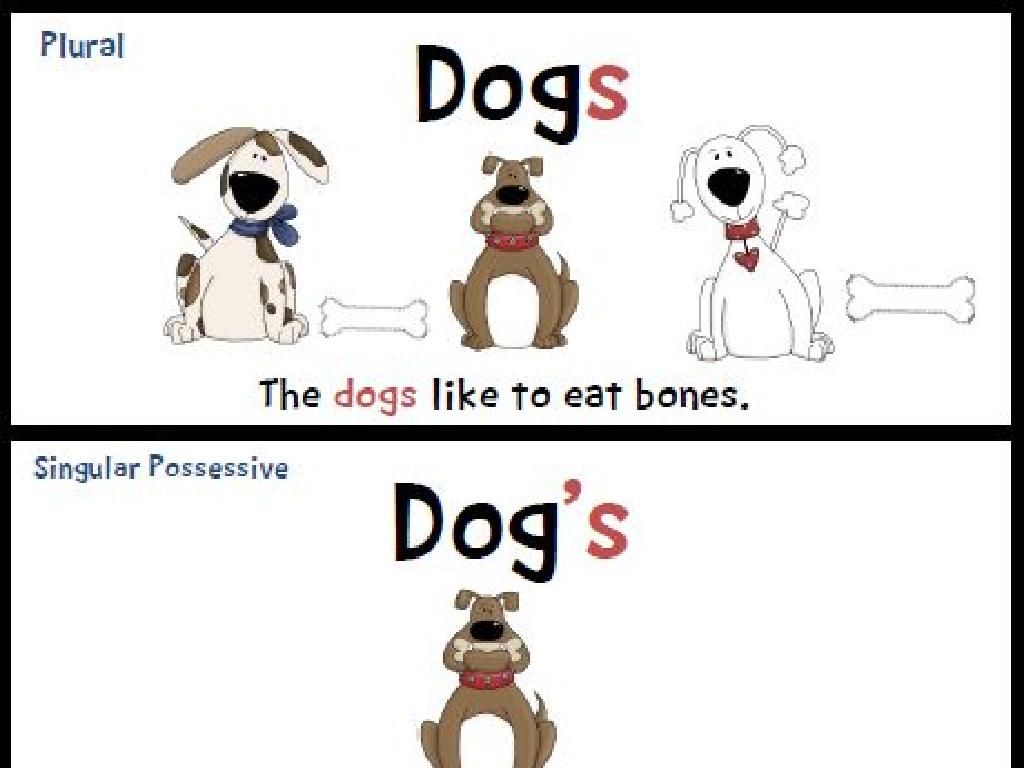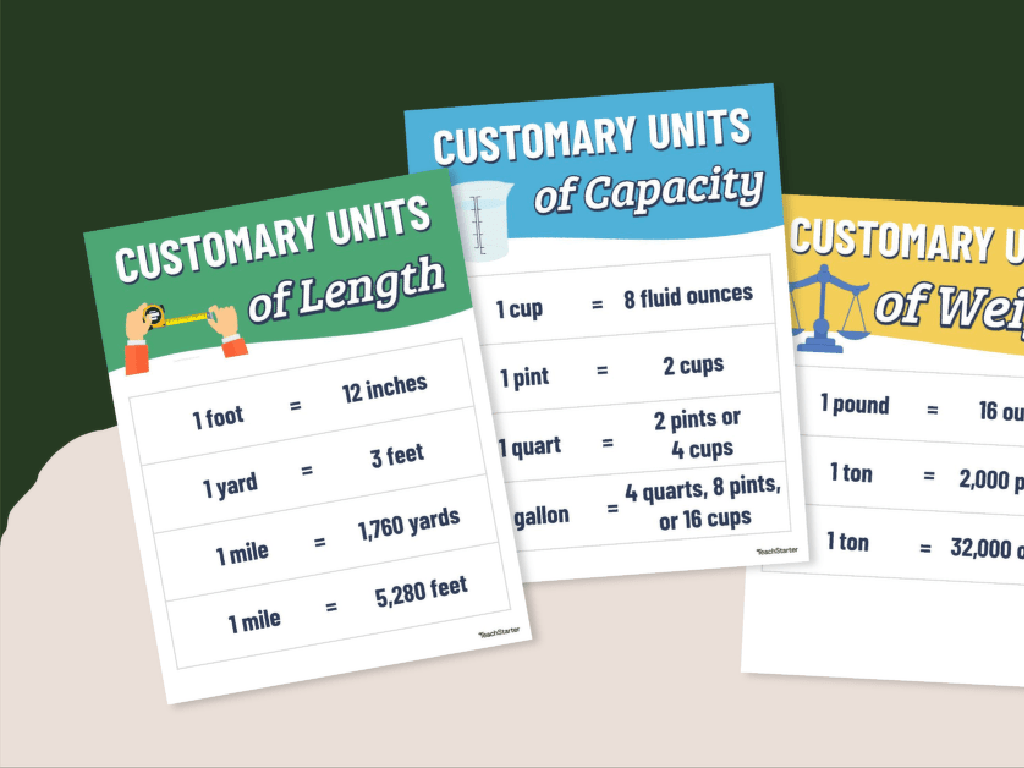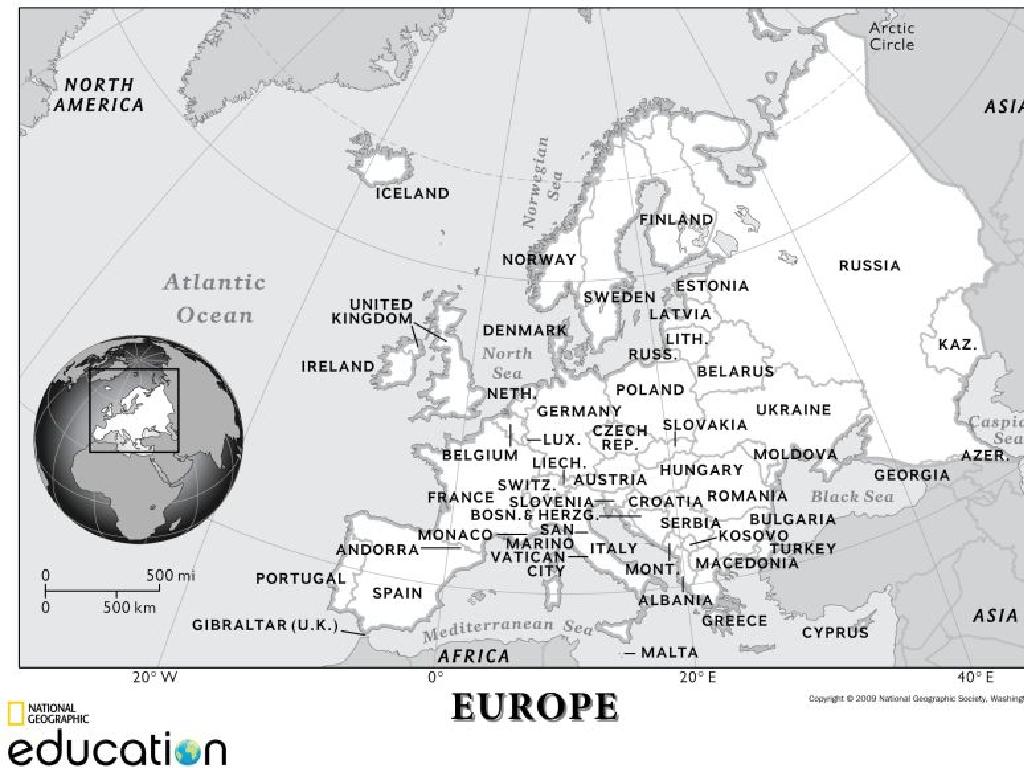Describe The Difference Between Related Words
Subject: Language arts
Grade: Eighth grade
Topic: Word Choice And Usage
Please LOG IN to download the presentation. Access is available to registered users only.
View More Content
The Power of Word Choice
– Understanding word impact
– Words shape perception and can influence emotions and actions.
– Significance of precise words
– Choosing the right word can change the message’s clarity and effectiveness.
– Exploring related words
– Related words have similar meanings but different nuances; for example, ‘happy’ vs. ‘joyful’.
– Enhancing communication
– Using the right words improves understanding and engagement in communication.
|
This slide introduces the concept of word choice and its importance in effective communication. Students will learn how the power of words can influence perception and the subtleties of language. Emphasize that even synonyms can carry different connotations and choosing the right word can greatly impact the clarity and reception of their message. Provide examples of related words and discuss the nuances between them. Encourage students to think critically about the words they choose in their writing and speaking to enhance their ability to express themselves clearly and persuasively.
Connotation vs. Denotation
– Define Connotation and Denotation
– Connotation: emotional/associative meaning, Denotation: literal meaning
– Words with different connotations
– ‘Childish’ vs. ‘Youthful’: negative vs. positive connotation
– Activity: Identify word connotations
– List of words: ‘Cheap’ vs. ‘Inexpensive’, ‘Stubborn’ vs. ‘Determined’
– Discuss connotation importance
|
This slide introduces students to the concepts of connotation and denotation, which are crucial for understanding word choice and usage. Connotation refers to the emotional or cultural associations that a word carries beyond its dictionary definition, while denotation is the literal, dictionary meaning of the word. Provide examples that illustrate how words with similar denotations can have different connotations, affecting the tone and implication of a sentence. The class activity will involve students identifying the connotations of given words, fostering critical thinking about word choice. Discuss why understanding connotation is important for effective communication, especially in writing.
Synonyms and Nuances
– Define synonyms
– Words with similar meanings but not identical
– Nuances in meaning
– Subtle differences in word meanings
– ‘Happy’ versus ‘Ecstatic’
– ‘Happy’ is pleased, ‘Ecstatic’ is overwhelmingly joyful
– ‘Sad’ versus ‘Despondent’
– ‘Sad’ is unhappy, ‘Despondent’ is a deep despair
|
This slide aims to explain the concept of synonyms and the subtle differences in meaning between words that appear to be similar, known as nuances. Synonyms are words that have similar meanings, but they are not exactly the same and can’t always be used interchangeably. Understanding nuances is crucial for effective communication and can greatly impact the tone and clarity of writing. For example, ‘happy’ and ‘ecstatic’ both express a positive emotion, but ‘ecstatic’ implies an intense level of happiness. Similarly, ‘sad’ and ‘despondent’ both describe negative emotions, but ‘despondent’ suggests a much deeper level of sadness. Encourage students to think of other examples and discuss how choosing one word over another can change the meaning of a sentence. This will enhance their vocabulary and ability to express themselves with greater precision.
Context Matters in Word Choice
– Context influences word selection
– Formal vs. informal language
– Use ‘assist’ in formal writing, ‘help’ in casual talk
– Match words to their context
– Given scenarios, choose the most fitting word
– Activity: Contextual word choice
– Students will match words to formal or informal situations
|
This slide introduces the concept that context is crucial when choosing words, especially when distinguishing between formal and informal settings. Provide examples of how the same idea can be expressed using different words depending on the context. For the activity, prepare a list of words and a variety of contexts. Students will match the words to the appropriate context, demonstrating their understanding of word choice nuances. This will help them recognize the importance of selecting the right word for the right situation, a key skill in effective communication. Possible activities include matching exercises, rewriting sentences for different settings, or creating dialogues using formal and informal language.
Homonyms, Homophones, and Homographs
– Define Homonyms, Homophones, Homographs
– Homonyms: same spelling/sound, different meanings. Homophones: same sound, different spelling/meaning. Homographs: same spelling, different sound/meaning.
– Examples in sentences
– ‘Bark’ (tree) vs. ‘bark’ (dog sound), ‘pair’ (two) vs. ‘pear’ (fruit), ‘lead’ (to guide) vs. ‘lead’ (metal).
– Class Exercise: Craft sentences
– Use homophones ‘to’, ‘too’, ‘two’ to make sentences.
– Understanding usage in context
|
This slide introduces students to the concepts of homonyms, homophones, and homographs, which are all types of words that can cause confusion due to their similar appearances or sounds but have different meanings. Provide clear definitions and examples for each to illustrate the differences. For the class exercise, encourage students to think creatively and come up with sentences that correctly use homophones, reinforcing their understanding of word choice in context. Possible activities: 1) Match homophones with their definitions, 2) Find homophones in a word search, 3) Write a short story using a list of homophones, 4) Create a homophone memory card game.
Precise Language in Writing
– Significance of precision in writing
– Precision helps convey the intended message clearly.
– Rewriting for clarity and precision
– Practice by choosing more specific words in sentences.
– Group activity: Enhance a paragraph
– Work together to refine a paragraph’s word choices.
– Impact of word choice on text
– Word choice can change tone, imagery, and reader engagement.
|
This slide emphasizes the importance of using precise language in writing to enhance clarity and reader understanding. Students will learn how to rewrite sentences to improve clarity and precision, focusing on choosing the most specific and accurate words. The group activity involves students collaborating to improve a short paragraph by changing vague or general words to more precise ones. This exercise will help them see the direct impact of word choice on the quality of text. Encourage students to discuss how different words can change the tone, imagery, and overall engagement of a paragraph. Provide examples of before and after sentences to illustrate the concept.
Class Activity: Word Choice Challenge
– Form teams and pick a recorder
– Rewrite a story with precise words
– Focus on replacing vague words with specific, descriptive ones
– Share your team’s story with the class
– Discuss the differences in word choice
– Compare how word choice affects the story s impact and clarity
|
This activity is designed to enhance students’ understanding of word choice and its impact on writing. Divide the class into small teams and assign a recorder for each to note down their final story version. Provide a short, simple story and challenge the teams to rewrite it using more precise and descriptive vocabulary. After the activity, each team will share their rewritten story with the class. Lead a discussion on how the different choices of words changed the tone, imagery, and clarity of the original story. Encourage students to reflect on the importance of selecting the right words to convey their intended message effectively. Possible variations of the activity could include focusing on synonyms, using sensory words, or incorporating figurative language.






